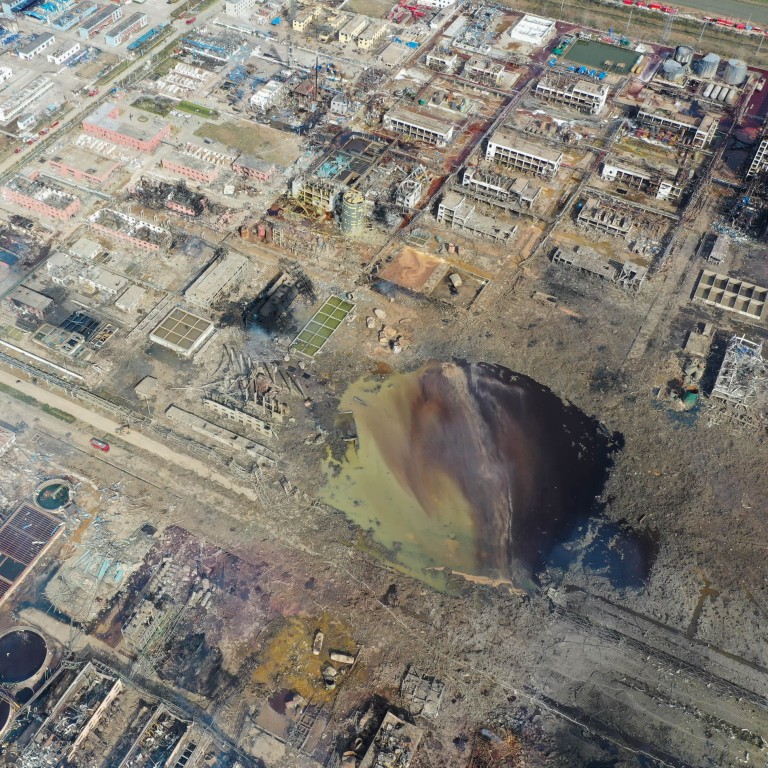
Chinese cities reliant on land sales rushing through clean-ups at polluted sites, study finds
- Researchers from Greenpeace and Nanjing University find ‘strong motive to sell land and do remediation as quickly as possible’ in some big cities
- Study highlights how rapid redevelopments could mean a higher risk of secondary soil pollution for new occupants
A new study released today has found Chinese cities that rely heavily on revenue from land sales tend to spend nearly 25 per cent less time cleaning up seriously polluted plots than places that do not.
The research by Greenpeace and Nanjing University’s ecology department highlighted how rapid redevelopments in congested Chinese urban areas could mean a higher risk of secondary soil pollution for new occupants.
It was based on the latest official data on 174 plots of land that were identified as polluted in 27 provincial capitals across China in 2017 and 2018.
“There is a trend. When a city has a high financial dependence on [revenue from] land sales, it has a strong motive to sell the land and do remediation as quickly as possible,” said Bao Hang, a Greenpeace East Asia toxics campaigner and the report’s main researcher.
“The main problem is that the quality of soil remediation therefore cannot be effectively guaranteed, and it might lead to second-hand pollution as a result of the restoration project,” he said.
Small factories in northern China count the cost of Beijing’s war on pollution
According to the study, 54 per cent of the plots were contaminated by metals like chromium, arsenic and lead, while volatile and semi-volatile organic compounds accounted for 23 per cent and 17 per cent of the cases, respectively.
Among the cities in the study, 10 provincial capitals and municipalities were classified as having a heavy to moderate reliance on land sales revenue. They were Beijing, Tianjin, Shenyang in Liaoning province, Nanjing in Jiangsu, Hangzhou in Zhejiang, Wuhan in Hubei, Changsha in Hunan, Chongqing, Nanchang in Jiangxi, and Guangzhou in Guangdong.
Researchers estimated that the total clean-up costs for the 174 plots amounted to about 77.5 billion yuan (US$11.5 billion) – around 7 per cent of the combined proceeds of subsequent land sales.
Still, the study found that in the cities with a high dependence on land sales revenue, the total time allocated for soil remediation was on average 56 days less than for cities with a moderate dependency, which took an average of 235 days for clean-up work.
About 47 per cent of the polluted plots were to be redeveloped for commercial or residential purposes, while 18 per cent were earmarked for schools or other public facilities.
Rushing through rehabilitation work could cause serious problems down the track. In a high-profile case in 2016, 493 pupils suffered from health problems related to contamination at a site near their school in Jiangsu province. Soil and groundwater at the former chemical production site near Changzhou Foreign Languages School was found to contain toxic chemical compounds and heavy metals.
“We need to take the environmental condition of soil into account in the process of urban land planning, land transfer and construction, and stop ‘poisonous land’ from entering the market,” Bao said.

According to experts, although soil pollution is not as visible as smog and tends to be under-reported, it is no less hazardous to human health than air pollution, and it is a problem in both urban and rural areas.
A national soil survey released in 2014 showed that 16.1 per cent of soil and 19.1 per cent of farmland across the country had been contaminated. The survey, released by the Ministry of Ecology and Environment and the Ministry of Land and Resources, was based on samples taken from 6.3 million sq km – or about two-thirds – of land in China.
Chinese plastics makers are switching to biodegradable materials as Beijing stresses on pollution-free economic progress
Chen Nengchang, a soil remediation expert with the Guangdong Institute of Eco-Environmental and Soil Sciences, said the problem of clean-ups being carried out too fast was prevalent in urban areas, but it was also common for arable land.
“We need to slow down the remediation pace and strengthen the assessment of its effectiveness,” Chen said.
The Greenpeace and Nanjing University study also noted that urban soil polluters rarely had to pay for clean-up work. More than 50 per cent of the polluted sites in the study were taken care of by local governments or state-owned companies, while property developers stepped in to address problems in about 15 per cent of the cases.

